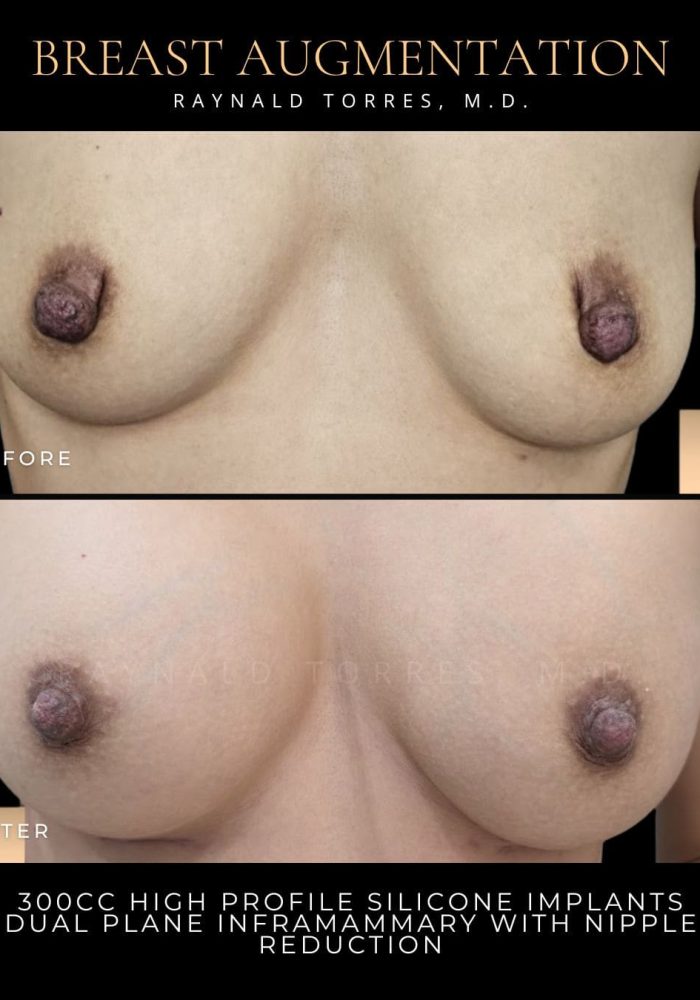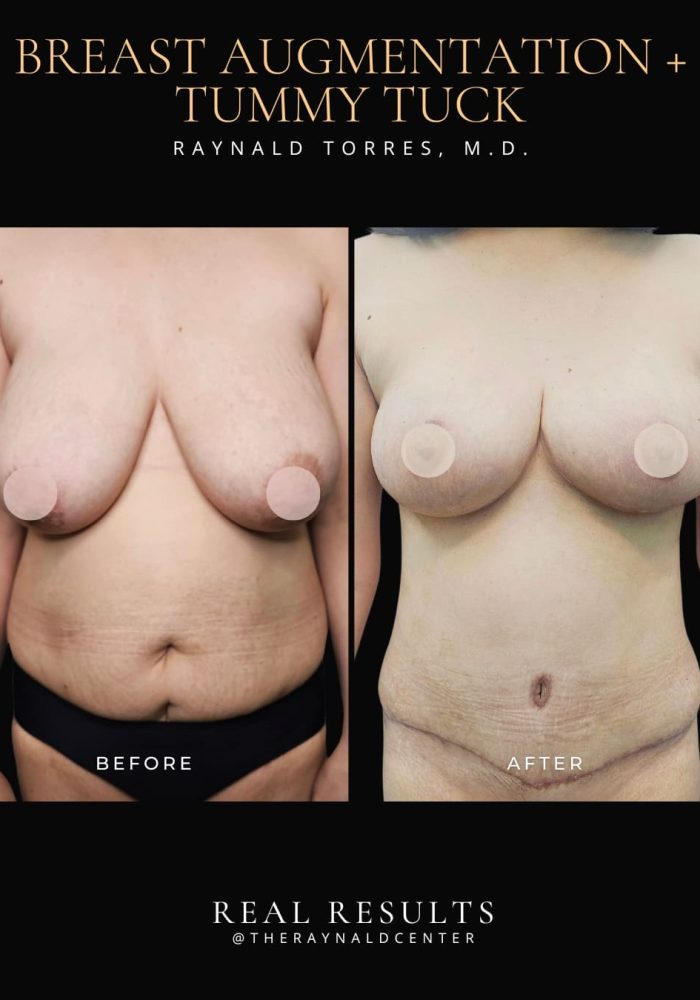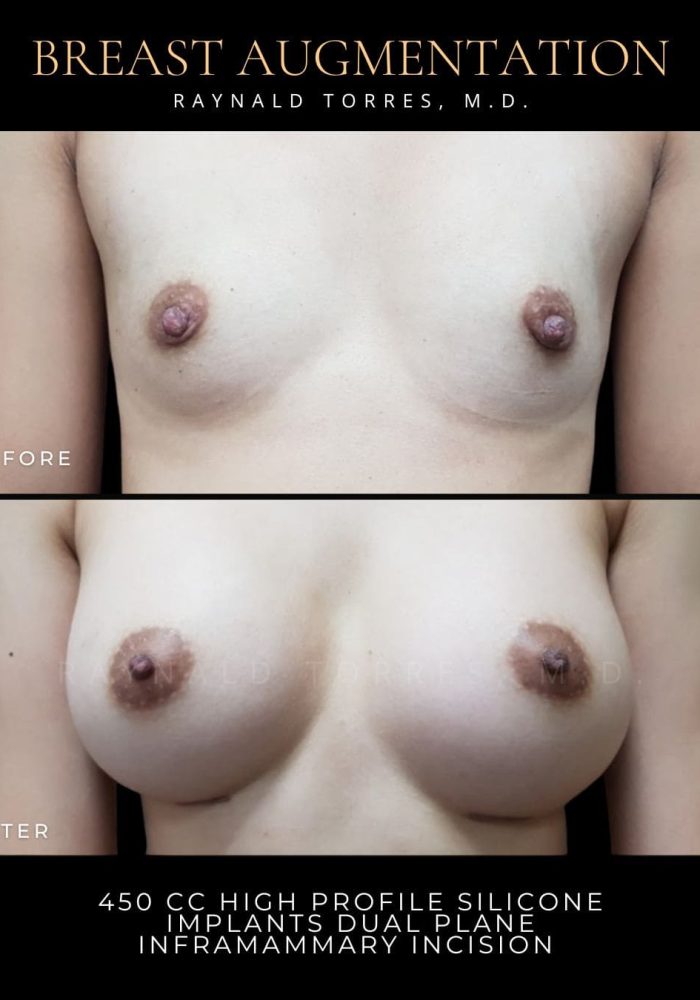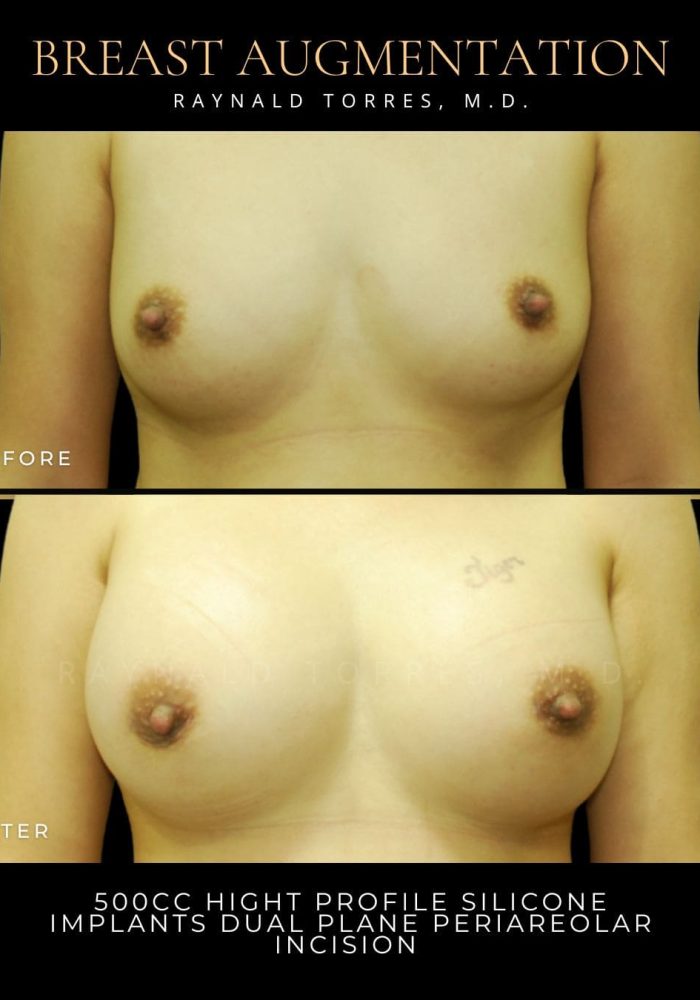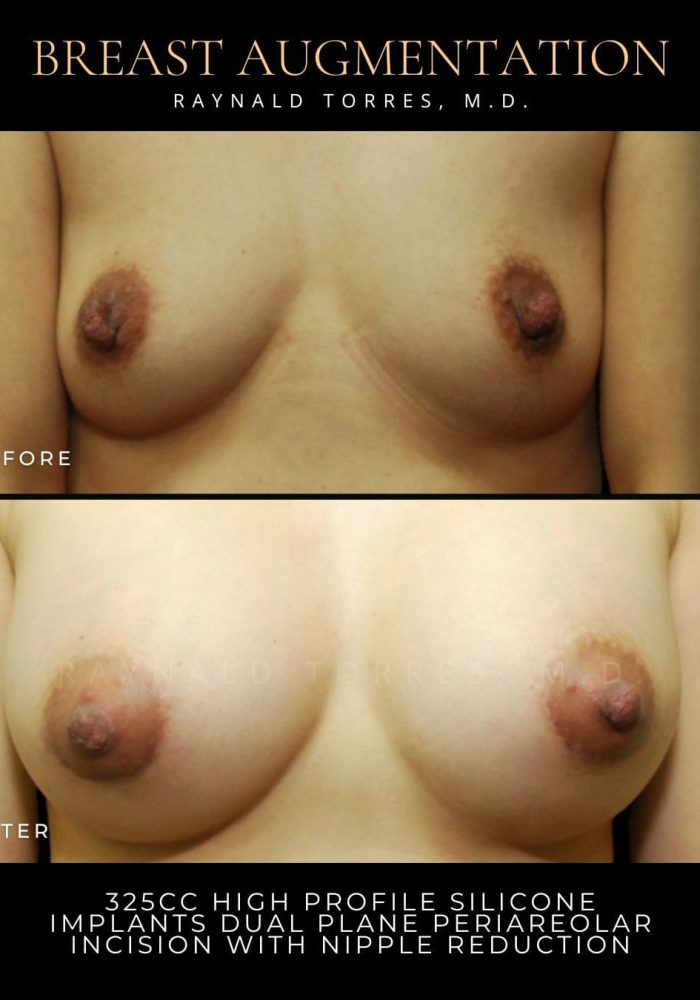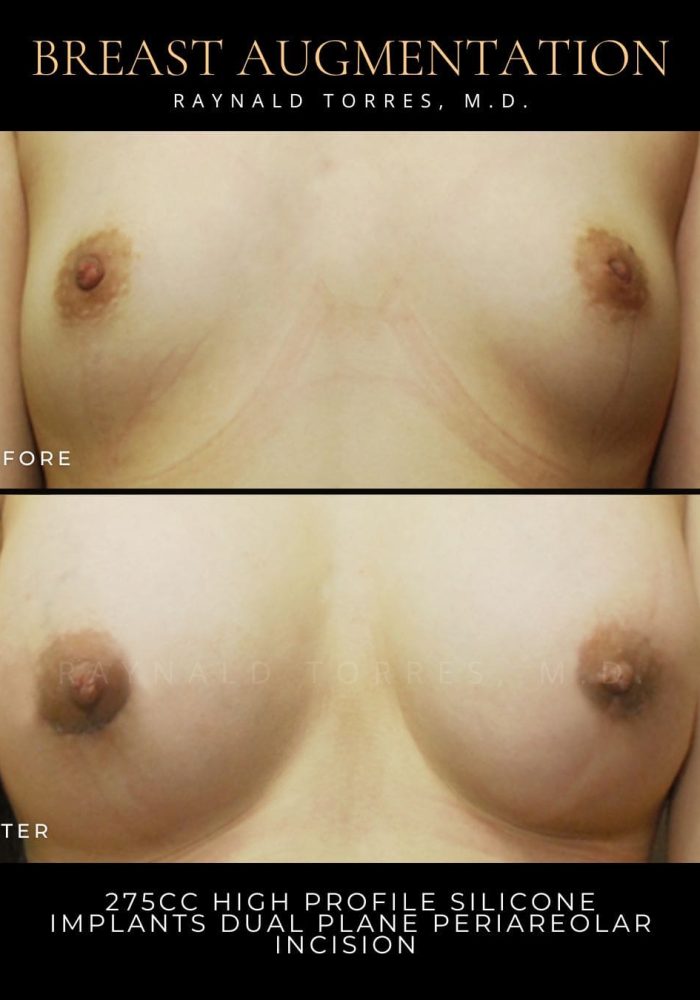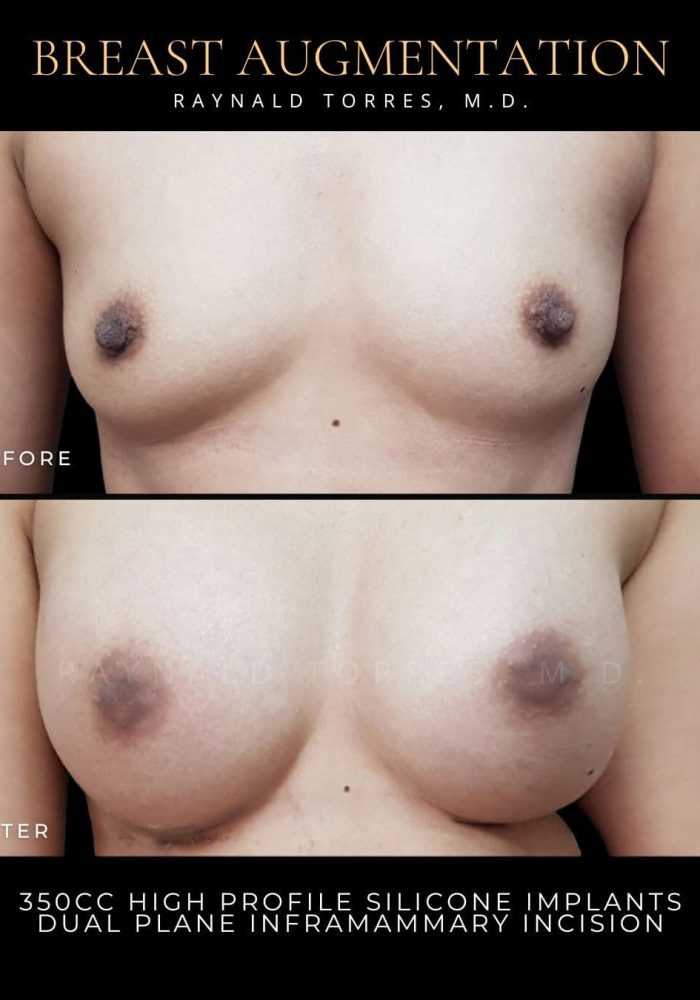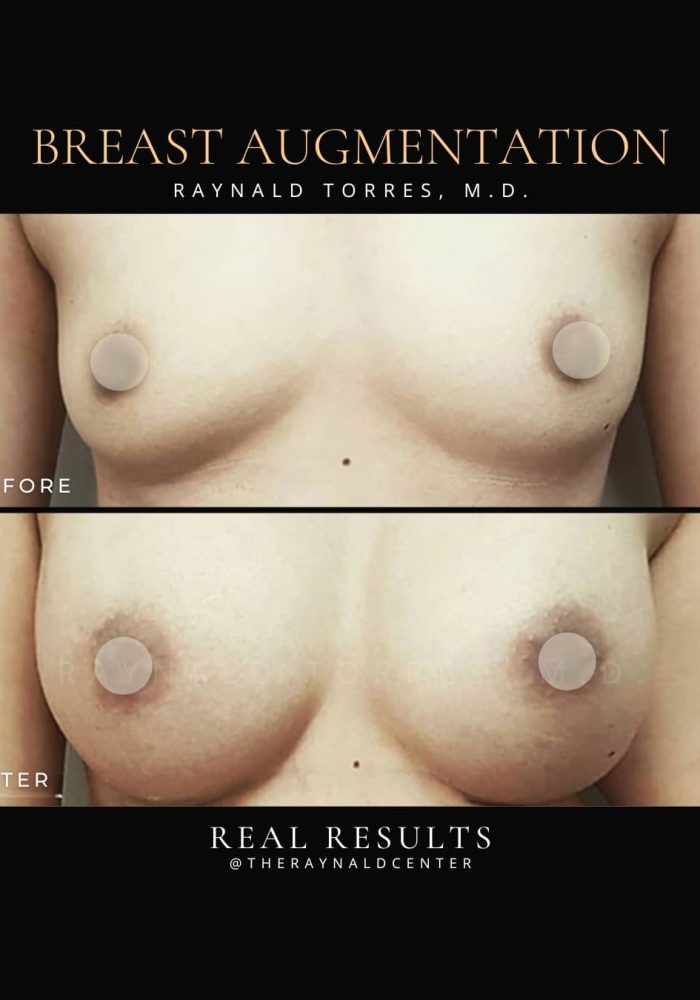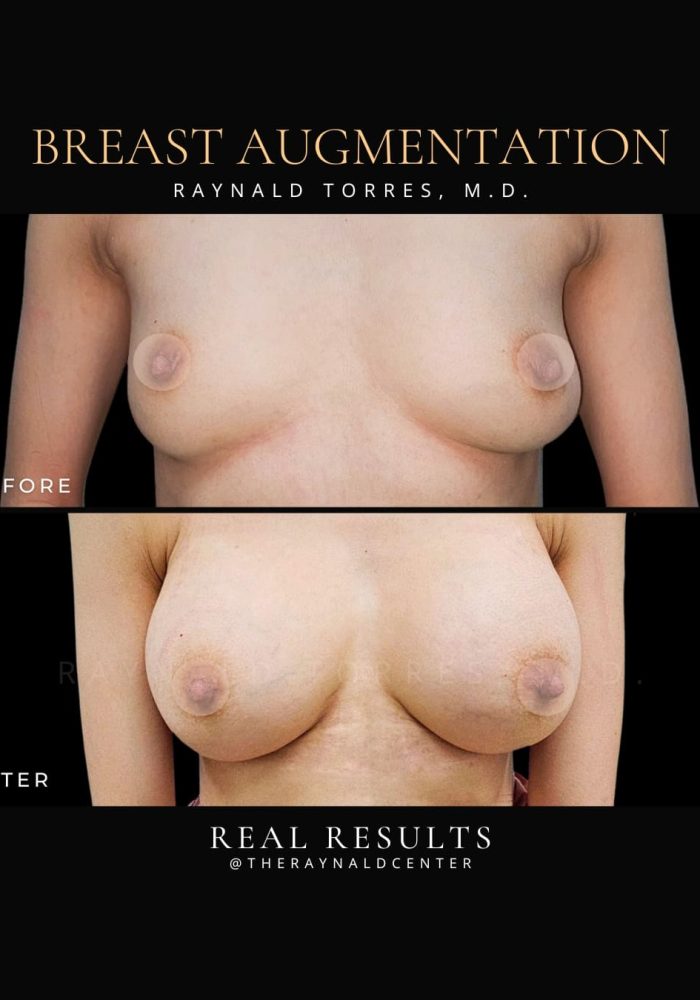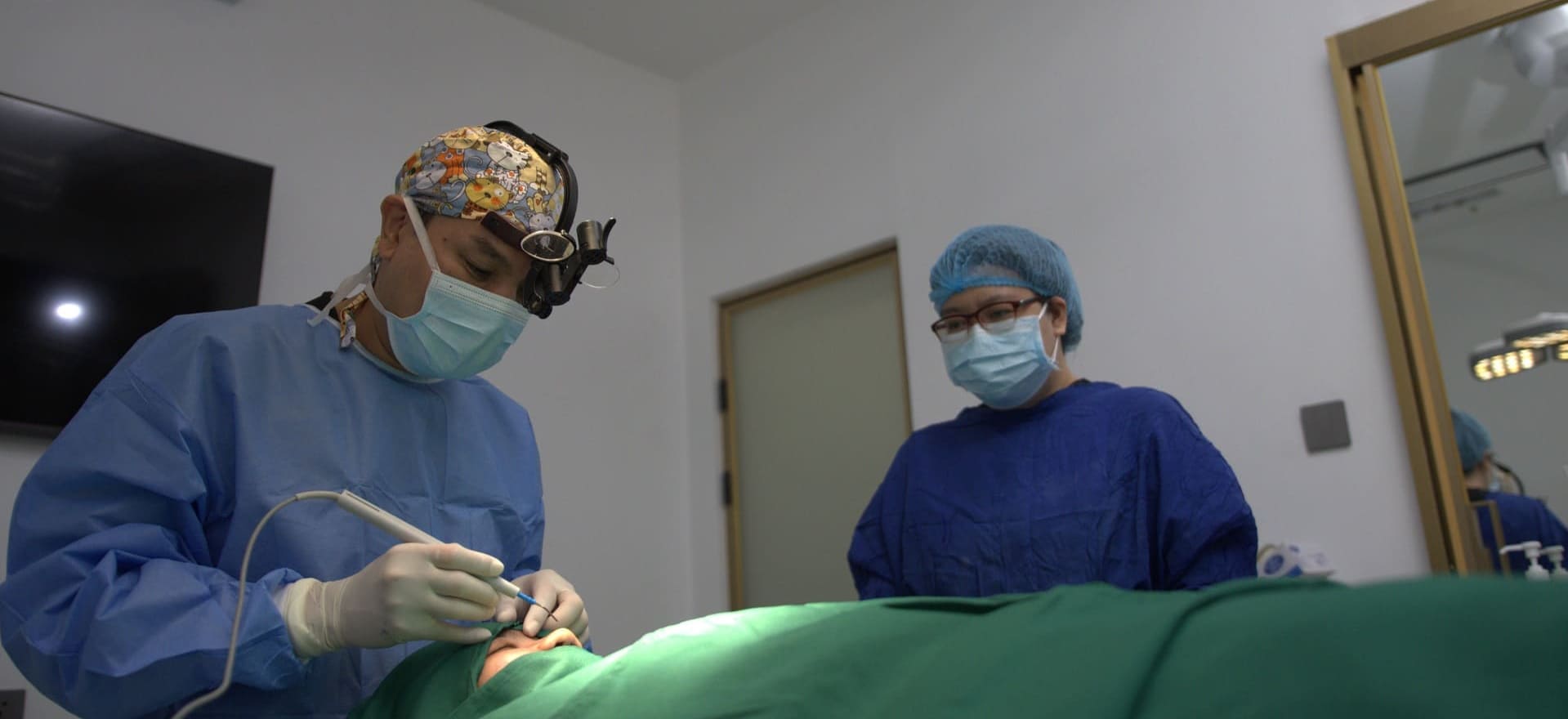
Breast Augmentation
BEFORE AND AFTER
videos
What is Breast Augmentation?
Breast augmentation is one of the most transformative procedures for women seeking to enhance their breast shape, volume, or overall body balance. I offer breast augmentation with cohesive silicone gel implants—commonly known as “gummy bear implants”—which are designed to provide a natural feel, long-term durability, and excellent aesthetic outcomes.
I place breast implants using one of three incision options, depending on your anatomy and goals. The most common is the inframammary incision, located under the breast along the natural breast fold. This is ideal for women with a clearly defined fold and results in a hidden scar that’s tucked beneath the breast. Another option is the periareolar incision, made around the edge of the areola. This area heals very discreetly and is especially useful if you also need areolar reduction or correction of tubular breasts. For patients who prefer to avoid any incisions on the breast itself, I offer the transaxillary incision, placed in the natural crease of the armpit. This option is great for women with a faint inframammary fold or those who don’t require a breast lift.
I use cohesive silicone gel implants, which are soft to the touch and feel more like natural breast tissue compared to saline. These “gummy” implants are highly durable and maintain their shape even if the outer shell is damaged—meaning they won’t leak or migrate, offering peace of mind and lasting results.
The implants are placed under the pectoral muscle, which allows for more tissue coverage, giving the breasts a more natural feel and appearance. The particular technique is called a dual plane placement where the muscle is released on the underside so that the muscle will not lull the implants upward with exercise whe the muscle contracts. It also avoids a complication called a double bubble where you end up with 2 folds under the breast. This technique also significantly lowers the risk of capsular contracture—a common complication where the implant becomes hard over time. With proper placement and the right implant choice, results remain naturally soft and long lasting.
FAQs: Breast Augmentation with Implants
1. What type of breast implant do you use?
I prefer cohesive silicone gel implants, also called gummy bear implants. They feel more natural, hold their shape, and are safer in case of rupture since the gel doesn’t leak or migrate.
2. Where will the incision be placed?
I offer three incision options:
Under the breast (inframammary fold) — hidden in the crease
Around the areola (periareolar) — well concealed in the natural color transition
In the armpit (transaxillary) — completely away from the breast
The best option depends on your anatomy and goals, and we’ll decide together during your consultation.
3. Will the implants be placed under the muscle?
Yes, I place implants under the pectoral muscle. This allows for more tissue coverage, resulting in a more natural feel, and it lowers the risk of capsular contracture or hardening of the breast.
4. How long do breast implants last?
Gummy bear implants are very durable and often last a lifetime. While there’s no fixed expiration date, they only need replacement if a complication arises.
5. Will the results look natural?
Absolutely. My goal is always natural-looking breasts that complement your body. The combination of under-muscle placement and cohesive gel implants helps achieve that soft, realistic look.
6. Can I combine breast augmentation with other procedures?
Yes. Breast augmentation is often done with breast lift surgery or as part of a mommy makeover to restore the body after weight loss or pregnancy.
7. Is there a lot of pain after the surgery?
Most patients describe it as discomfort or tightness rather than pain. I use techniques that reduce trauma to the muscle and tissues, making recovery smoother and more comfortable.
8. Will I still be able to breastfeed?
In most cases, yes. Placing the implant under the muscle and choosing the right incision helps preserve milk ducts and glands, though it can vary from person to person.
9. How soon can I go back to work or exercise?
Light activity and desk work can usually resume in 5 to 7 days, while full exercise and lifting should wait about 4 to 6 weeks depending on healing.
Pre-Procedure Guidelines
Proper preparation helps ensure the surgery goes smoothly and recovery is as comfortable as possible.
1. Medical Clearance & Laboratory Tests
Complete all necessary pre-surgical lab tests and clearances.
Inform your surgeon about any medications, supplements, or pre-existing conditions (e.g., diabetes, high blood pressure).
2. Medications & Supplements
Discontinue any blood-thinning medications (e.g., aspirin, ibuprofen, herbal supplements) 7 days before surgery unless otherwise instructed.
Continue your maintenance medications for hypertension, diabetes, or other pre-existing conditions unless advised otherwise.
Do not take aspirin or anti-inflammatory medications (NSAIDs) for at least one week before surgery.
3. Lifestyle Adjustments
No smoking or vaping 2 weeks before and after surgery as nicotine impairs blood flow and delays healing.
Avoid alcohol for at least 48 hours before surgery.
Arrange for a friend or family member to drive you home after surgery and help with initial recovery.
4. Day of Surgery
Fasting: Do not eat or drink anything (including water) after midnight on the night before your surgery if you’re undergoing general anesthesia.
Shower using antibacterial soap the night before or morning of surgery.
Remove all makeup, piercings, nail polish, and contacts before surgery.
Wear loose, comfortable clothing that is easy to remove.
Post Procedure Guidelines
Following the post-op instructions closely will help ensure a smooth recovery and prevent complications.
Have the following items ready for use after surgery:
Extra pillows for elevating your head
Additional pain medication as prescribed
Distilled water
Cotton and cotton buds
Medications & Lifestyle
DO take all prescribed medications as instructed in your post-op kit.
DO NOT take aspirin or aspirin-containing products for one week after surgery.
NO ALCOHOL for three weeks to prevent fluid retention.
NO SMOKING for three weeks to promote better healing and reduce complications.
Exercise & Activity
DO walk around the house when you get home to improve circulation.
DO resume light exercise (such as walking) after two weeks, ensuring you wear your compression garment or bra.
DO NOT strain, lift heavy objects, or engage in vigorous activities (including sports and exercises) for one month after surgery.
Post-Surgery Care
Wound Care
Gauze dressing may be removed after two days. Do not remove the tape over the incisions.
Clean the wounds gently using distilled water on cotton or cotton buds twice a day. Keep the wounds dry to prevent infection.
Avoid touching the wound area with dirty hands.
Compression & Clothing
Wear a compression garment bra 24 hours a day for one week, then during waking hours for two weeks.
After this, you can switch to a regular sports bra or support bra as advised by your surgeon.
Bathing & Hygiene
You may resume showers after two days but avoid direct contact with water at the incision sites until cleared by your surgeon.
Keep the bandage and dressings dry to avoid infection.
Avoid swimming or submerging your chest in water until your surgeon advises otherwise.
Pain Management
Mild to moderate pain is normal and can usually be controlled with prescribed pain medication.
Inform your surgeon immediately if you experience severe or debilitating pain, as this could indicate a complication.
Follow-Up & Recovery
Attend all scheduled follow-up appointments so your surgeon can monitor healing.
Sleep with your head elevated above your chest using at least two pillows for the first week after surgery to minimize swelling.
Lifestyle Restrictions
Stop smoking and drinking alcohol for at least two weeks to support proper healing.
Avoid strenuous activity, including lifting heavy objects or engaging in vigorous physical activities, for one month.

